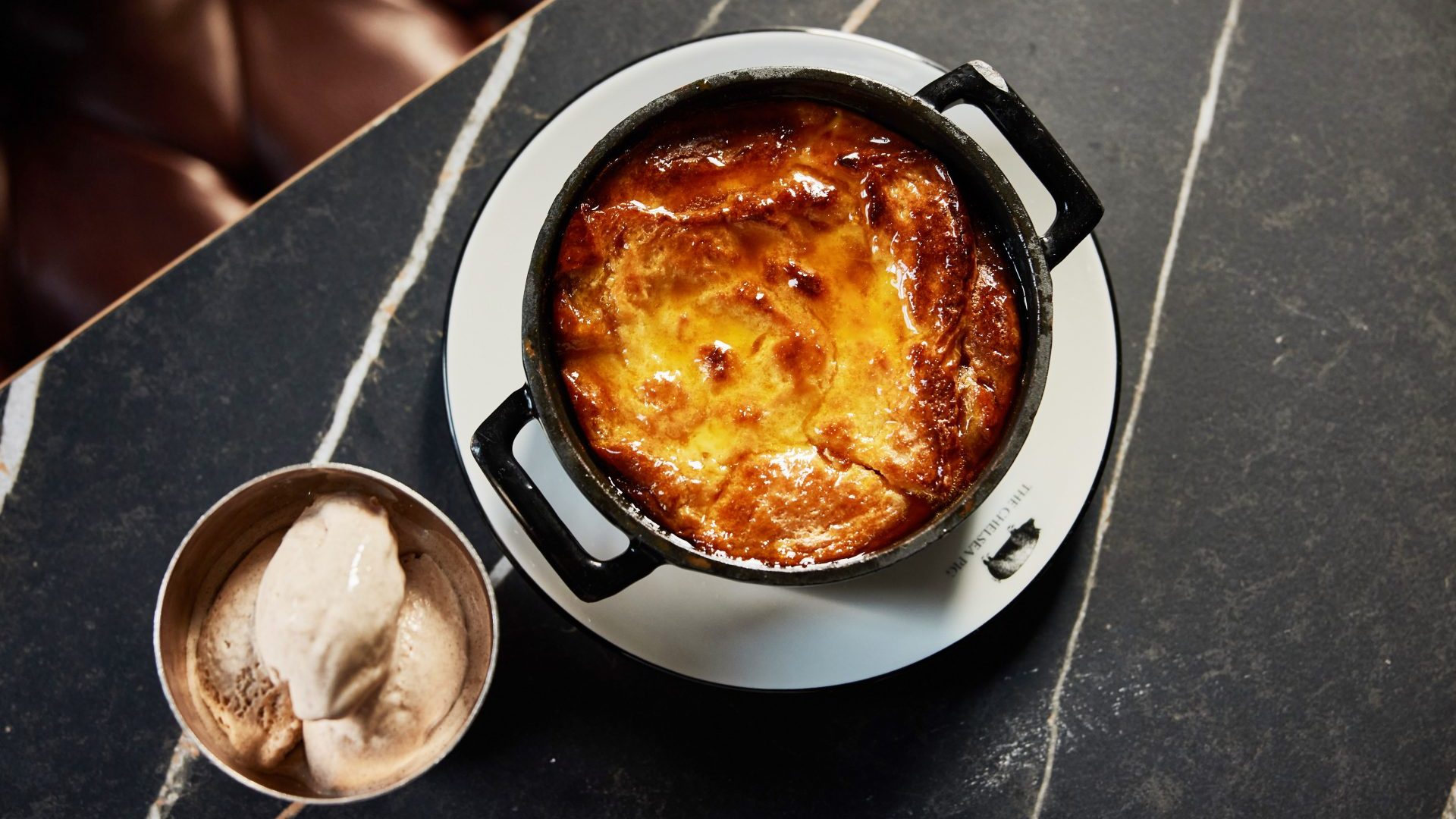A recipe column should, from time to time, put forward a pudding. There have been a few printed here – Mark Hix’s pavlova and a cherry and chocolate arrangement from Tom Kerridge among them – but perhaps they’ve been in short supply.
There’s a reason for this: I don’t very much care for pudding. Mostly I hold
this position when dining out. After snacks and bread, a starter, a main, it
is not that I am uncompromisingly full – sure, sometimes I might be – it is
most likely that I feel a dessert unnecessary. I’d rather have a small
chocolate morsel and a double espresso, and then a digestif.
My aversion to sweetness extends beyond desserts in dining room settings. I don’t care for sugar in booze, either. Cocktails with syrups and boundless fruity concoctions upset me to an astonishing degree. Why dilute the good stuff? The classics are best – give me a Hemingway or a Manhattan, perfect on the rocks. Or douse me in negronis, bitter and heady, and let me sit contented.
But I’d be a croissant short of a French breakfast if I were to denounce sugar entirely or suggest that I forgo it completely. I’m not trying to be salubrious in my dining. A bowl of Coco Pops is a fine thing, so too are biscuits of an afternoon with tea or a pot of chocolate mousse on a Sunday, post-roast. I suppose there is alignment there: as with drinks, when it comes to dessert, I like the old-school variations best. I’m not convinced by these newfangled recipes, meringue shards and earthy compotes, silly bits of pastry, caramel and exhausting oil-drenched cakes. Pizza Hut’s warm, gooey cookie, topped with an ice cream that is more air than cream, is more enticing thanks to its simplicity. Sugar needn’t be overworked.
In fact, I don’t think a genuinely beautiful and lasting cocktail has been invented in the past three or four decades; I’m not sure a truly iconic
dessert has either. Do excuse this wilful indulgence.
Still, dessert is dessert, and most people love it. You are almost certainly
a sweet enjoyer and I’d be doing you a disservice if I were to ignore that
unsubtle fact.
Here, then, is a stunning composition, where brioche is used as bread in that traditionally hearty and filling dish of bread and butter pudding. This one, from the Irish chef Fionnan Flood, head chef at The Chelsea Pig in south-west London, is given a sticky marmalade glaze and partnered with cinnamon ice cream for that caring stipend of spice. Even if I’d wave this dish away while out for dinner, I’d happily tuck into this at home by the fire.
MARMALADE BREAD AND BUTTER PUDDING & CINNAMON ICE CREAM
SERVES TWO
FOR THE CUSTARD:
110g milk
110g double cream
50g sugar
1 egg
20g egg yolk
FOR THE BREAD AND BUTTER PUDDING:
6 brioche slices
Butter
Marmalade (to taste)
Caster sugar
1L orange juice
FOR THE ICE CREAM:
330g milk
90g double cream
120g sugar
100g egg yolks
Vanilla extract (to taste)
½ tsp cinnamon powder
METHOD:
FOR THE CUSTARD:
In a Kitchenaid or similar, mix all the ingredients for the custard together until emulsified.
FOR THE MARMALADE BREAD AND BUTTER PUDDING:
In a 5×4 inch cast-iron pot, melt a stick of butter over a low heat and spread this to evenly coat the base of the pan before dusting with a layer of sugar on top.
Separately, spread a liberal amount of butter on one side of each piece of brioche, before adding a layer of marmalade and forming into a sandwich.
Cut the sandwiches in half to make a triangle shape and gently place these
into your cast iron pot without leaving any spaces or gaps.
Pour half your custard into the cast-iron pot to allow the brioche to fully absorb it, before adding the final half of the mix on top.
Using a Bain Marie, steam your pudding at 150°C for 25-30 minutes until cooked through, before allowing this to cool down completely.
Next, place the pudding in the oven and bake at 220°C until puffed up and
golden brown on top.
While your pudding is cooking, heat your orange juice in a saucepan with
150g of sugar until thickened into a syrupy consistency.
Pour syrup on top of your pudding when ready to serve, before adding a scoop of cinnamon ice cream.
FOR THE CINNAMON ICE CREAM:
In a saucepan, pour in all the ice cream’s ingredients.
Heat the mix to 85°C, constantly stirring until you reach a custard consistency.
Leave the mixture to cool before placing in the freezer and waiting overnight, or until completely frozen.
Cut your frozen custard into smaller pieces before using a blender to blitz
until smooth.
Refreeze the mixture and use when required.




